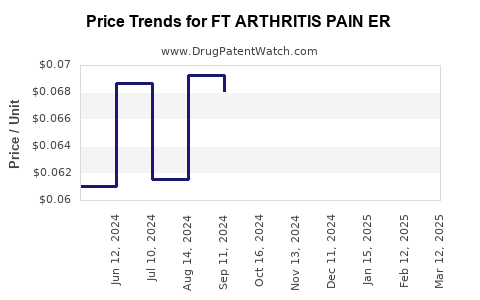Drug Price Trends for FT ARTHRITIS PAIN ER
✉ Email this page to a colleague

Average Pharmacy Cost for FT ARTHRITIS PAIN ER
| Drug Name | NDC | Price/Unit ($) | Unit | Date |
|---|---|---|---|---|
| FT ARTHRITIS PAIN ER 650 MG TB | 70677-1130-01 | 0.06725 | EACH | 2024-11-20 |
| FT ARTHRITIS PAIN ER 650 MG TB | 70677-1130-01 | 0.07282 | EACH | 2024-10-23 |
| FT ARTHRITIS PAIN ER 650 MG TB | 70677-1130-01 | 0.06805 | EACH | 2024-09-18 |
| >Drug Name | >NDC | >Price/Unit ($) | >Unit | >Date |


